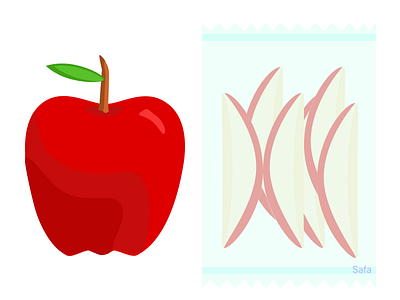Apples, Packaging, and Universal Design
In this image, you can see an apple and another apple. Both are delicious and ready to eat, simply packaged in different ways. The one on the left is as you'd expect: whole, plucked fresh from the apple tree. The one on the right is pre-sliced and packaged in plastic.
While some people may scoff at the pre-packaged apple slices on the right, (I know what you're thinking: just cut the apple yourself, why do you need them to be sliced for you!?) let's take a moment to acknowledge who benefits from such a design.
Any person could benefit from pre-packaged, pre-sliced produce, in fact.
Not only denture-wearers who cannot bite into apples comfortably, but also anyone with a muscle-related disorder, those who are clumsy with a knife for whatever reason, people wearing dental braces or suffering from TMJ, children and adults who are on-the-go, diabetics or others who are on special diets that require precision in their nutrition facts and may not have a scale on them... and more!
Why don't those who cannot use knives safely just ask for help? Well, sometimes people just want to be independent. They don't always want to ask for assistance. Also, this assumes they have someone in their life they can ask, and that may not always be the case.
We can all agree that plastic being used as packing material is not ideal. Indeed, this is problematic for the environment, but it is not that the design should go away, it is more so that the packaging needs to be designed in a smarter way. Is it possible to design with a biodegradable, food-grade material? One that can be tossed in a compost pile?
A part of universal design is thinking outside of the box, asking question after question, and finding a solution that can work for anybody.
Topic inspired by Jessica Kellgren-Fozard's video: https://www.youtube.com/watch?v=6XgCtEC2lXM&t=928s
*Reuploaded in a higher resolution

